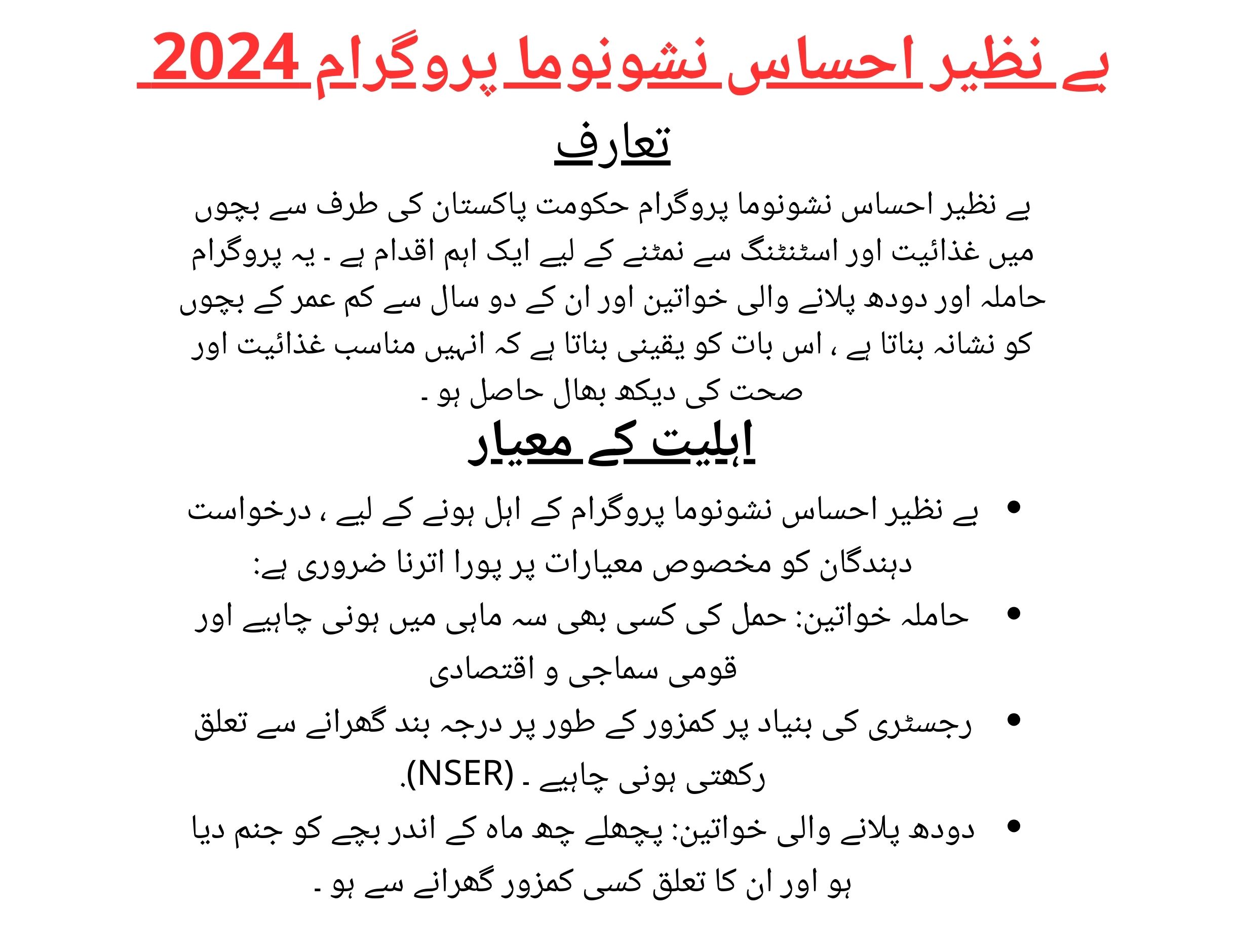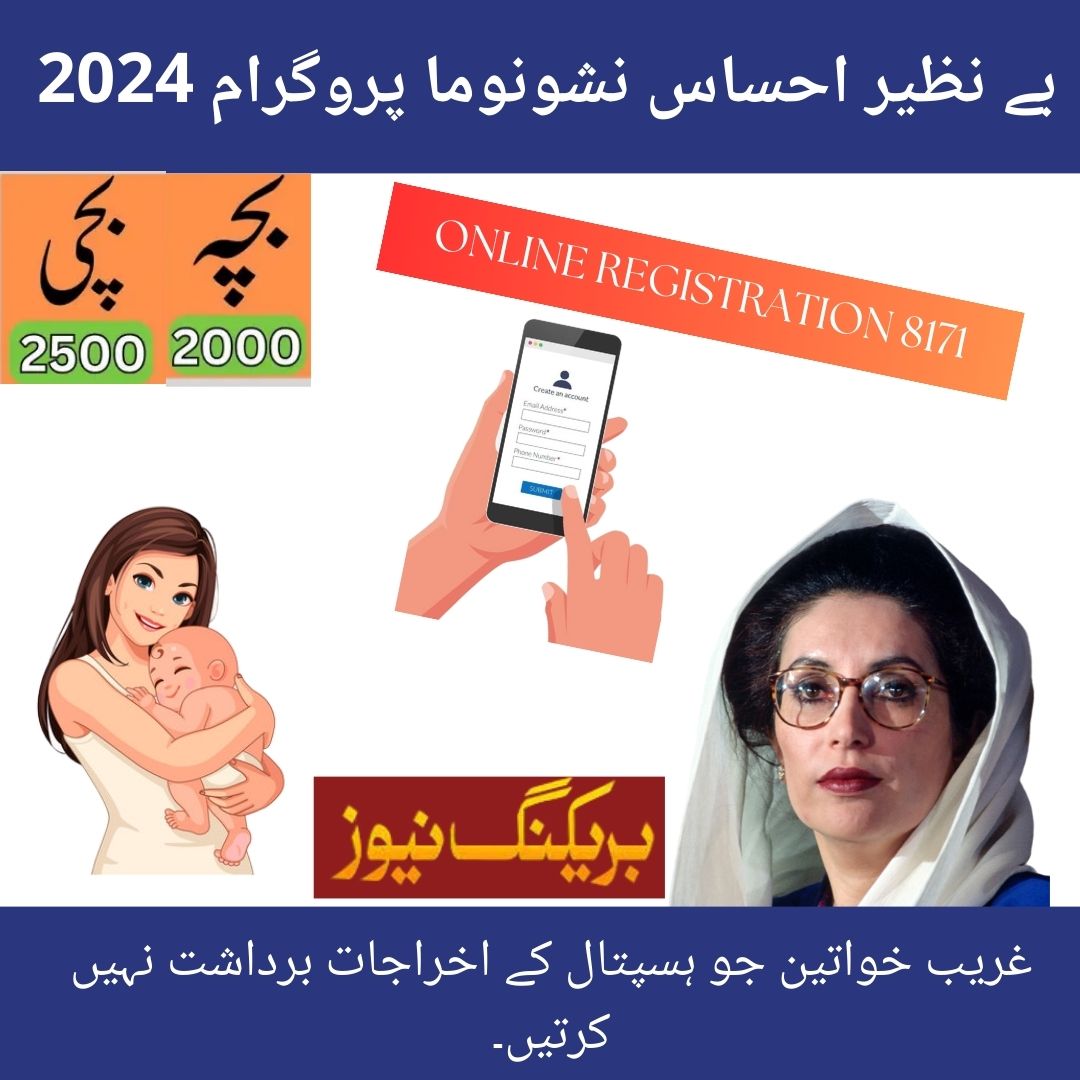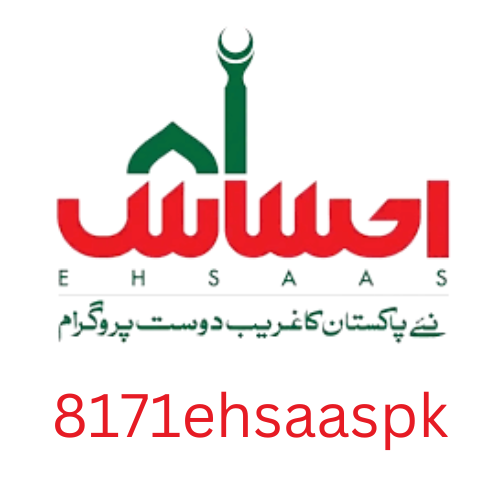Contents
“Benazir Ehsaas Nashonuma Program Registration Process”
Introduction
The Benazir Ehsaas Nashonuma Program is a significant initiative by the Government of Pakistan to tackle malnutrition and stunting among children. This program targets pregnant and lactating women and their children under two, ensuring they receive adequate nutrition and healthcare. A critical component of the program’s success is its efficient and comprehensive registration process, designed to ensure that the intended beneficiaries can easily access the support they need.
Objectives of the Registration Process
The primary objective of the registration process for the Benazir Ehsaas Nashonuma Program is to identify and enroll eligible beneficiaries systematically and transparently. The process ensures that the most vulnerable segments of the population, particularly those in remote and underserved areas, are included. By streamlining the registration, the program aims to minimize bureaucratic delays and ensure timely delivery of benefits.
Eligibility Criteria
To be eligible for the Benazir Ehsaas Nashonuma Program, applicants must meet specific criteria:
-
- Pregnant Women: Must be in any trimester of pregnancy and belong to a household classified as vulnerable based on the National Socio-Economic Registry (NSER).
- Lactating Women: Must have given birth within the past six months and belong to a vulnerable household.
- Children Under Two: Must be part of a household classified as vulnerable, with priority given to those showing signs of malnutrition or stunting.

Steps in the Registration Process
Awareness Campaigns
The registration process begins with comprehensive awareness campaigns conducted at the community level. These campaigns involve local health workers, community leaders, and media outlets to inform potential beneficiaries about the program’s benefits and eligibility criteria. These initiatives ensure that the target population knows the program and understands the importance of enrolling.
Initial Screening
The first step for interested individuals is to undergo an initial screening. This is typically conducted at local health centers or through mobile health units deployed in remote areas. During this screening, health workers collect basic information about the applicants, including their pregnancy or lactation status and the age and health status of their children. This preliminary data helps identify those who qualify for the program.
Documentation and Verification
After the initial screening, applicants are required to submit the necessary documentation for verification. The required documents typically include:
– National Identity Card (NIC) of the applicant.
– Proof of pregnancy (such as antenatal cards) or birth certificate of the child.
– Proof of residence to ensure the applicant is part of the targeted community.
The verification process involves cross-checking the submitted documents with the National Socio-Economic Registry (NSER) to confirm the applicant’s eligibility based on their socio-economic status.
Health and Nutrition Assessment
Eligible applicants undergo a detailed health and nutrition assessment conducted by trained health workers. This assessment includes measuring the weight, height, and mid-upper arm circumference (MUAC) of the pregnant or lactating woman and her child. The data collected during this assessment helps determine the nutritional status of the beneficiaries and tailor the support accordingly.
Enrollment and Issuance of Cards
Once the health and nutrition assessment is complete and eligibility is confirmed, beneficiaries are formally enrolled in the Benazir Ehsaas Nashonuma Program. Each enrolled beneficiary is issued a Benazir Nashonuma Card, which serves as proof of their enrollment and is used to access the program’s benefits, including conditional cash transfers, specialized food products, and health services.
Conditional Cash Transfers and Benefits
Enrolled beneficiaries receive conditional cash transfers, provided they meet specific health and nutrition-related conditions. These conditions include:
– Regular antenatal check-ups for pregnant women.
– Immunizations and growth monitoring for children.
– Attendance at health and nutrition education sessions.
The cash transfers are disbursed quarterly and are aimed at helping beneficiaries meet their nutritional needs and access essential health services.
Monitoring and Compliance
The Benazir Ehsaas Nashonuma Program employs a robust monitoring system to ensure compliance with the program’s conditions and to track the progress of beneficiaries. Health workers regularly visit beneficiaries to conduct follow-up assessments and verify that the conditions are being met. This monitoring system helps maintain the integrity of the program and ensures that the benefits are being utilized effectively.
Challenges and Solutions
Challenges
Despite its comprehensive design, the registration process for the Benazir Ehsaas Nashonuma Program faces several challenges:
-
- Access to Remote Areas: Reaching beneficiaries in remote and underserved regions can be difficult due to poor infrastructure and logistical constraints.
- Documentation Issues: Some eligible beneficiaries may lack the necessary documentation, such as identity cards or birth certificates, hindering their ability to enroll.
- Awareness and Cultural Barriers: Cultural norms and a lack of awareness about the program can prevent some women from participating.
Solutions
To address these challenges, the program has implemented several strategies:
-
- Mobile Health Units: Deploying mobile health units to remote areas ensures that potential beneficiaries can be screened and enrolled without having to travel long distances.
- Documentation Assistance: Assisting with obtaining the necessary documentation helps ensure that all eligible individuals can enroll.
- Community Engagement: Working with local leaders and community health workers helps overcome cultural barriers and increase awareness about the program’s benefits.
Conclusion
The registration process for the Benazir Ehsaas Nashonuma Program is designed to be inclusive, transparent, and efficient. By systematically identifying and enrolling eligible beneficiaries, the program ensures that the most vulnerable populations receive the support they need to improve their nutritional status and overall health. Through continuous monitoring and adaptive strategies to overcome challenges, the program aims to make a lasting impact on the health and well-being of pregnant and lactating women and their children in Pakistan.
FAQs
Q1 How can I register for the Ehsaas Nashonuma Program?
-
- To register for the program, eligible heirs can shoot the designated SMS law corresponding to their order(e.g., pregnant women, children under 2 times) to the specified number handed by the program directors.
Q2 What documents are needed for registration in the program?
-
- The specific attestation conditions may vary, but generally, heirs may need to give evidence of identity, hearthstone, and income status to qualify for the program.
Q3 How are cash transfers distributed to heirs?
-
- Cash transfers are generally expended through mobile banking or designated payment centers, icing secure and accessible access for heirs.
Q4 Is the Ehsaas Nashonuma Program available civil?
-
- While the program aims to expand its content across the country, perpetration may vary by region, with precedence given to areas with advanced rates of malnutrition and poverty.
Q5 How does the program ensure the effectiveness of nutrition interventions?
-
- The program incorporates regular monitoring and evaluation mechanisms to assess the impact of nutrition interventions on device issues, enabling adaptations and advancements as demanded


